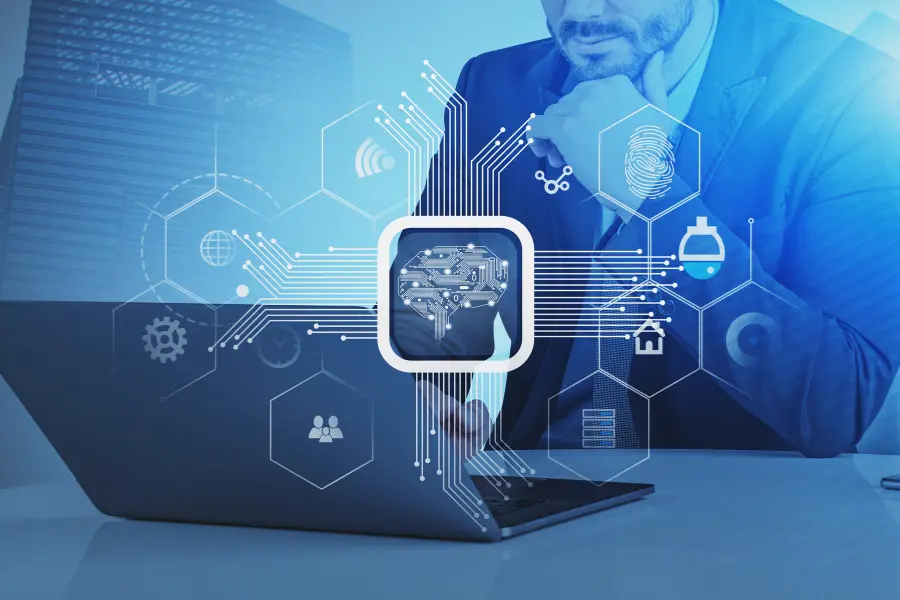Python's Role in ML for Image Recognition and Computer Vision
Python is an essential tool in machine learning frameworks for image analytics in IoT recognition and computer vision. Python offers a comprehensive set of libraries and frameworks for developers to build AI models.
Image recognition is a subset of computer vision and artificial intelligence that involves the ability of computer software or systems to identify and classify objects, people, text, and actions within digital images and videos. Image recognition allows computers to interpret visual input, like how people see and identify objects. Image recognition has many prospects, including applications in healthcare, security, autonomous vehicles, banking, manufacturing, military surveillance, and so on. The most popular method for implementing image recognition is with the Python programming
language, as it offers an easy-to-read programming language that’s incredibly flexible and widely supported by most image recognition tools. Computer vision is a simulation of biological vision using computers and related equipment. Its main task is to obtain the three-dimensional information of the corresponding scene by processing collected pictures or videos. Computer vision includes image processing, pattern recognition, geometric modelling, and recognition processes. Image Understanding is the ultimate goal of computer vision. Machine learning is developing, and computer vision research has gradually shifted from traditional models to deep learning models represented by CNNs and deep Boltzmann machines.

1. Libraries and Frameworks
As mentioned, Python has an open-source ecosystem with a global community that has built frameworks and libraries for developers in image recognition and computer vision. This ecosystem has been responsible for the remarkable progress made in both fields. Some of the popular tools are:
- OpenCV (Open Source Computer Vision): A versatile library with extensive capabilities for image and video analysis, including image processing, feature detection, object tracking, and camera calibration.
- TensorFlow and Keras: TensorFlow, along with its high-level API Keras, offers robust support for building and training deep learning models, including convolutional neural networks (CNNs) widely used in image recognition tasks.
- PyTorch: Known for its flexibility and ease of use, PyTorch is another popular framework that supports dynamic computational graphs, making it ideal for prototyping and deploying deep learning models for computer vision applications.
- Scikit-learn: Although primarily a machine learning library, Scikit-learn provides algorithms and tools for feature extraction and classification, which are foundational for building image recognition systems.
2. Deep Learning and Neural Networks
Deep learning frameworks from Python like TensorFlow and PyTorch, enable the implementation of sophisticated neural networks for image recognition:
- Convolutional Neural Networks (CNNs): Python frameworks facilitate the construction of CNN architectures optimized for image classification, object detection, segmentation, and localization tasks.
- Transfer Learning: Pre-trained CNN models (e.g., VGG, ResNet, Inception) available in TensorFlow and PyTorch can be fine-tuned on custom datasets, leveraging learned features for specific image recognition tasks with minimal training data.
3. Data Preprocessing and Augmentation
Python libraries such as NumPy, SciPy, and Pandas provide essential tools for data preprocessing and augmentation in image recognition pipelines:
- Data Augmentation: Techniques like rotation, flipping, cropping, and color jittering are easily implemented to enhance model generalization and robustness.
- Feature Extraction: Extracting meaningful features from images using techniques like histograms of oriented gradients (HOG), scale-invariant feature transform (SIFT), or deep feature extraction with CNNs.
4. Deployment and Integration
Python's versatility extends to deployment and integration of ML models for image recognition:
- Web Frameworks: Flask and Django facilitate building APIs to serve trained models, enabling seamless integration into web applications and services.
- Edge Computing: Optimizing models for deployment on edge devices using frameworks like TensorFlow Lite or ONNX Runtime, ensuring efficient inference and real-time performance in resource-constrained environments.
Real-World Applications
- Autonomous Vehicles: Tesla is a well-known example of an autonomous vehicle using computer vision systems. These systems use Python libraries and frameworks. Machine learning tools combined with AI models allow sensors in the car to analyze and understand the surroundings and take appropriate action. Actions rely on the trained AI model's evaluation for real-time decisions.
- Medical Imaging: PThe phenomenal evolution of medical science in the last ten years is due to the contribution of computer vision and image recognition. Trained AI models with machine learning and deep learning tools aid medical professionals in diagnosing diseases by evaluating medical images like X-rays, MRIs, and CT scans.
- Security and Surveillance: Image recognition algorithms identify and track individuals, objects, or anomalies in surveillance footage, enhancing security monitoring and threat detection.
Conclusion
Python is a vital cog in the wheel for developing image recognition and computer vision applications. It has a rich ecosystem of libraries and frameworks providing support for machine learning and deep learning. Developers create AI models using Python tools to analyze and interpret visual data across various domains, driving innovation and advancing technology in image-centric tasks.
Join the 8-week bootcamp from Lejhro to become an expert in Digital marketing at
Active Events
Laying the Groundwork: Python Programming and Data Analytics Fundamentals
Date: Aug 06, 2025 | 7:00 PM(IST)
7:00 PM(IST) - 8:00 PM(IST)
2811 people have registered
Transition from Non-Data Science to Data Science Roles
Date: Aug 07, 2025 | 7:00 PM (IST)
7:00 PM (IST) - 8:10 PM (IST)
2753 people have registered
3 Must Have Projects On your CV to Get into Data Analysis
Date: Aug 05, 2025 | 7:00 PM(IST)
7:00 PM(IST) - 8:10 PM(IST)
2753 people have registered
Bootcamps
Data Analytics Bootcamp
- Duration:8 weeks
- Start Date:October 5, 2024
Data Science Bootcamp
- Duration:8 weeks
- Start Date:October 5, 2024
